Pre-War Japanese Baseball Cards
November 15, 2011 by Rob Fitts · 3 Comments
I was writing an update for my web site on the history of Japanese baseball cards when I realized that American fans might enjoy seeing this baseball eye candy. So, I’m posting this short history of pre-World War II Japanese cards here on Seamheads. This is not meant to be a comprehensive history; it’s just an introduction for beginners.
Baseball came to Japan in the 1870s when Horace Wilson, a teacher at Kaisei Gakko in Tokyo, introduced the game to his students in 1872 and Hiroshi Hiraoka, an engineer for the national railways, returned from studying in American and organized the Shimbashi Athletic Club in 1878. The game quickly spread and soon kimono and geta clan young men could be seen batting balls throughout Tokyo. By the end of the nineteenth century, high school and college teams existed across Japan.
There is just one known nineteenth-century Japanese baseball card. It is a round menko dating to 1897. Casting or flipping menko is a game that dates from the Edo period when the pieces were made from clay, wood or metal. There are a variety of different menko games but in the most basic, players attempt to flip over their opponent’s menko by tossing their own menko at one lying on the playing field. During the Meiji period (1868-1912) cardboard menko gradually became the dominant type. These early menko often depicted historical figures, military heroes, government officials, and generic objects such as trains, flags, and animals. Sports figures were rare although several nineteenth century sumo menko sets survive. The only identified baseball menko from this period depicts a generic player in a quilted uniform catching a ball barehanded.
| * |
| * |
By the turn of the century baseball had become the most popular high school and collegiate sport with thousands of fans watching games between rival Waseda and Keio Universities. Within a couple of decades, leagues were created to crown national champions. In 1915 the Asahi newspaper created the National Secondary School Baseball Championship, know known as summer Koshien. Nine years later, the Mainichi newspaper created a spring tournament known as the National Secondary School Baseball Invitational Tournament. In 1925, the top university teams in Tokyo formed the Tokyo Big Six Baseball League which remained the pinnacle of Japanese baseball until the creation of a stable professional league in 1935.
Shortly after the turn of the century, college and high school teams began issuing black and white or sepia tone postcards. Postcards remained the most prevalent form of Japanese baseball card until the mid-1920s. These cards were often sold as sets in paper envelopes and depicted team pictures, star players, and action shots from important games. Postcard sets were also produced for the 16 American collegiate and 5 professional teams that toured the Land of the Rising Sun between 1905 and 1929.
| * |
| * |
By the 1920s, baseball menko became more common. Menko from the twenties and thirties took four forms. The first were the traditional round menko, usually measuring one or two inches in diameter with a color drawing of a player on front and a blank cardboard back. The second were rectangular menko. These were usually about an inch wide and 1 ½ to 2 inches tall with a color drawing on the front and a two-tone image on the reverse. The reverse image could be nearly anything—scoreboards, animals, trophies, baseball equipment were all common. Baseball statistics or biographical details of the depicted player were rarely, if ever, placed on the reverse. Some companies elongated their rectangular menko until they became 3 or 4 inches long while maintaining a width of about an inch. These are now known as oblong or bookmark menko and highly sought after by collectors. The forth type of menko are neither circular nor rectangular but are cut to the shape of their depicted image. These are known as die cut menko.
To read the rest of this article and see more photos, please click here .

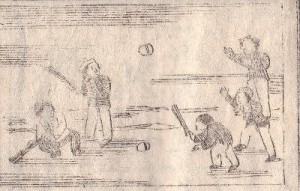
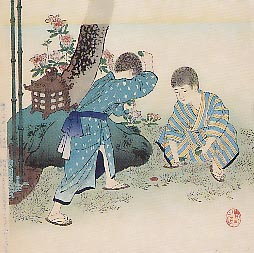
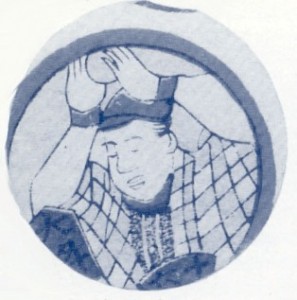
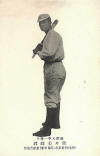


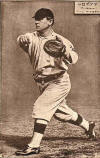
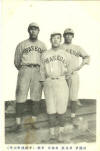


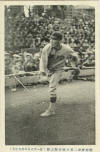

This is great, Rob. Thanks for writing this!
You’re very welcome. Please feel free to ask questions and I’ll do my best to answer
Hi,
I liked your blog and I personally invite you to join htttp://www.coollectors.com – The World’s Free Collectors Zone.
We will also be happy to cooperate with your blog such as adding its link to our site.
All the best,
Diane
info@coollectors.com